A set of renaissance-style apothecary jars – used as medieval containers for modern sunscreen.
These jars were an amusing conceit – making small renaissance-style apothecary jars to hold sunscreen for use at medieval events. I have always loved the beautifully decorated apothecary jars and here was my excuse to have a play…
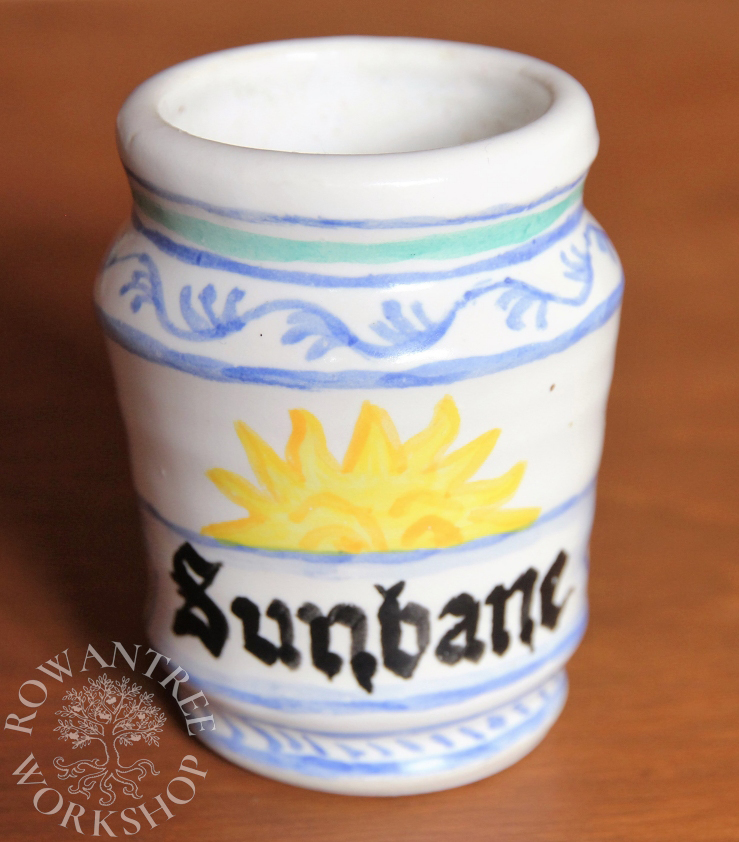
Research & Design
Albarello is the Italian term for these storage jars, which were in general use – not just in apothecary shops. Tin-glazed earthenware (Houkjaer 2005) states that majolica in this form are often apothecary jars and that the shape had its origins in the Middle East (museums also catalogue them as drug jars).
The archetypical albarello appears in the mid 15th century, and continues through the 16th century, with most production in Italy, Spain and France. Some jars show labels and/or images relating to their contents – others are decorated in foliate, geometric or pictorial forms.
For my purpose, I wanted a label in black gothic script, on a blue-edged ribbon, and some simple decorative bands above and below.

Source: British Museum
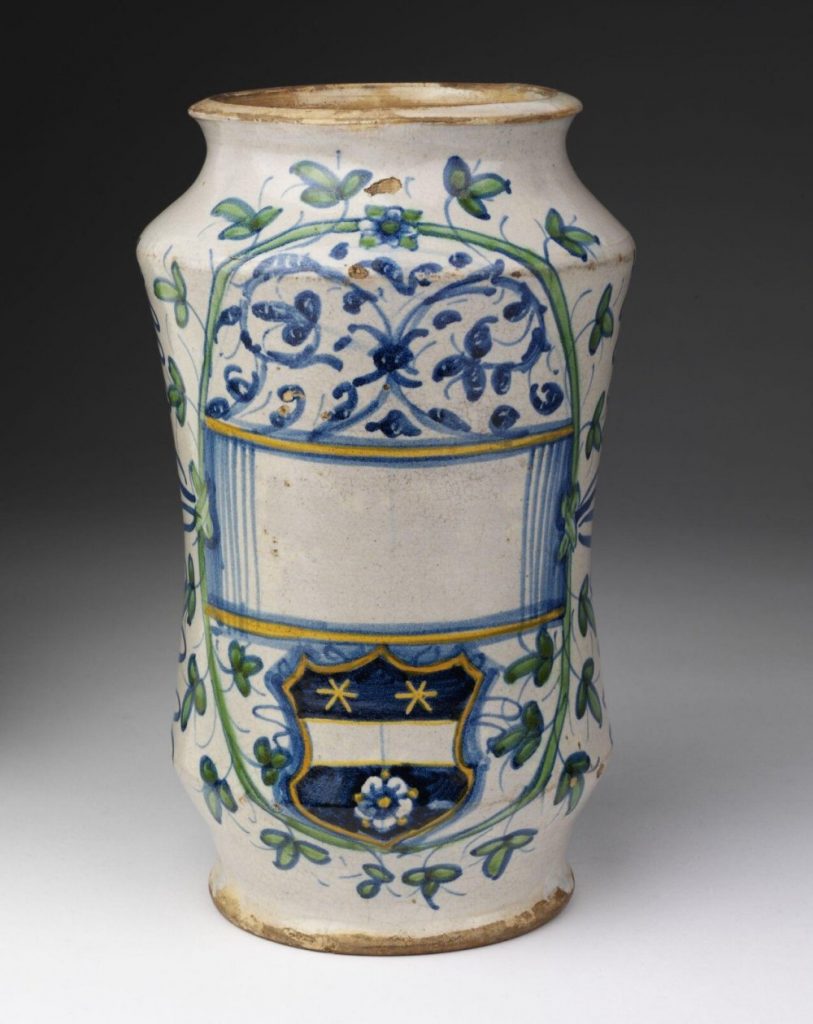
Source: V&A Museum
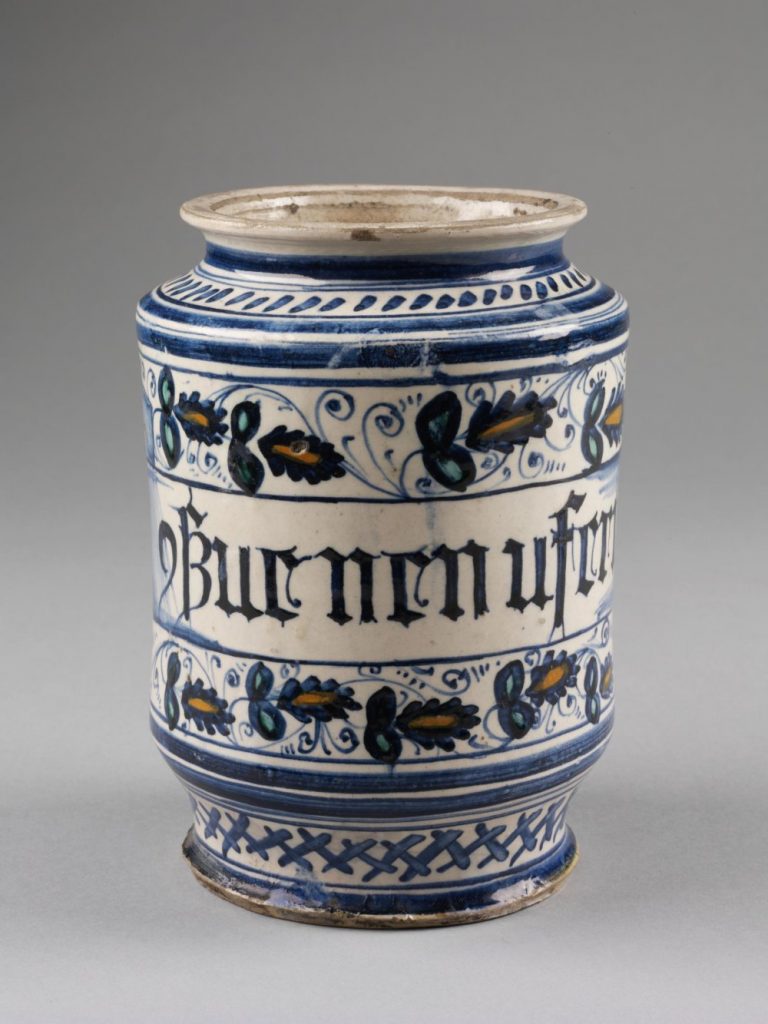
Source: V&A Museum
I planned to make 6 jars – for myself and several friends, with some variations in design so we could tell them apart. The back of each jar would show heraldic symbols relating to the person, with varied border designs.
Construction
At the time I had not done any real pottery (I’ve played a bit since), so I asked my friend Alex at Flaming Gargoyle Pottery to make me some suitable pots in a few sizes – small ones for this project and some larger ones for later. He under-glazed them in white, ready for me to paint.
Alex gave me advice on the right types of glazes to buy and I had a lovely time looking at all the options at the local pottery supplier. Buying supplies for a new craft is always so much fun…
Handmade pots always vary a bit, but they were close enough to make a pattern. I wrapped paper around a jar, then sketched out the basic design – half a sun, with the label below.
I started with the label, using a small flat brush like a dip pen, I wrote ‘Sunbane’ on each jar, in gothic script. When that was dry, I painted the label border in blue, and then painted the bands on the top and base. Quite challenging to paint glaze onto the chalky undercoat – you can’t undo any mistakes!

I could have put the sun in freehand too, but instead I made a template, pricking holes in the paper pattern with a blunt needle. I used ground charcoal to pounce through holes and transfer the design, and then painting on the glaze. The charcoal burns away, so there is no residue after firing.

Once finished, I sprayed the jars with hairspray to protect the fragile glaze (this also burns off) and handed them over to Alex to fire. They came back all glossy and beautiful.
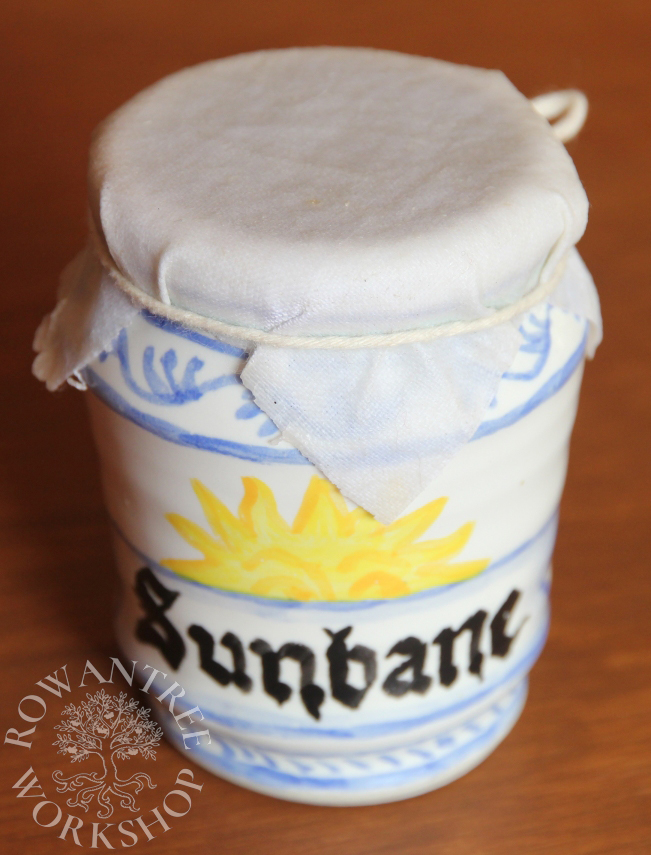
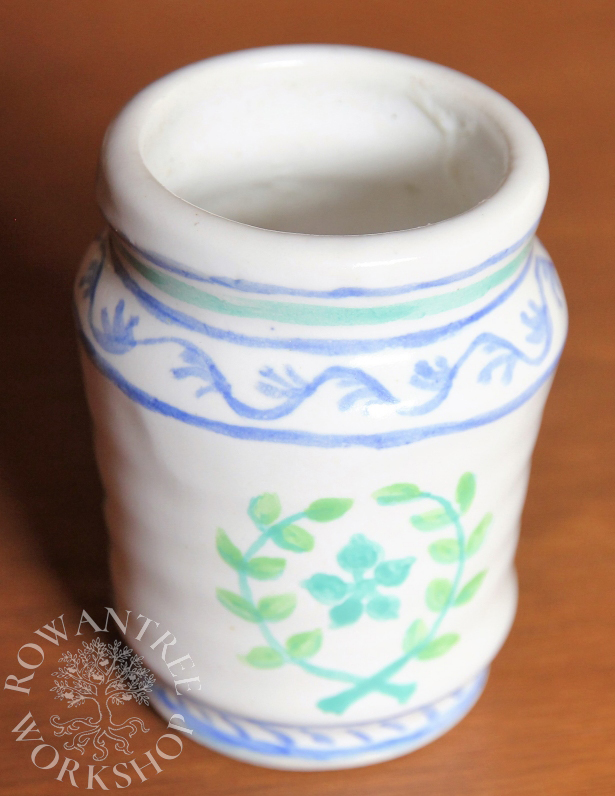
I loved giving them to the people I’d made them for – including a surprise one for Alex, who had made me the pots.
The following year, I made a more elaborate apothecary jar for another friend.
Afterthoughts
I still enjoy the practicality and whimsy every time I use mine. After filling it with sunscreen, I seal it with cerecloth (linen soaked with beeswax) and tie under the purpose-made rim.
This works well to avoid spills, but is airtight enough to avoid the sunscreen drying out for many weeks. But not (as I discovered) airtight enough to last to the following summer…

